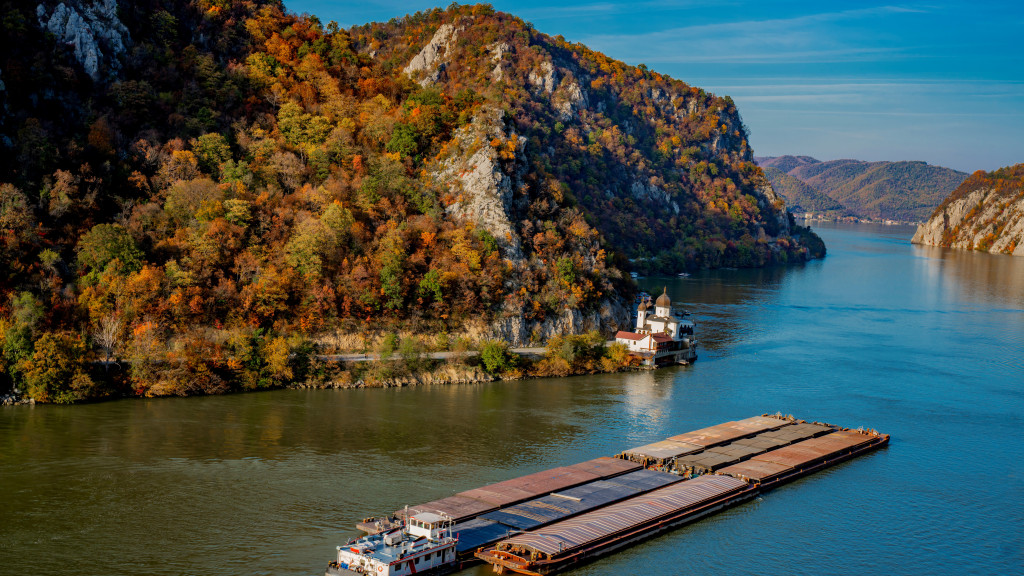The Sava Commission, Danube Commission, and ICPDR Convene for the Launch of the Joint Statement 2.0 Process

The Sava Commission, Danube Commission, and ICPDR have come together to launch the Joint Statement 2.0 process, marking a significant step forward in harmonizing navigation and environmental protection in the Danube River Basin. With the first Stakeholder Workshop underway, this updated framework aims to address new challenges, including climate change impacts, sustainable transport, and innovative river management solutions. Discover how this initiative is set to shape the future of the region's waterways.
The Sava Commission, the Danube Commission, and the International Commission for the Protection of the Danube River (ICPDR) will convene at the Vienna International Center on Friday, 27 September 2024, for a significant milestone in inland navigation and environmental protection. This gathering marks the launch of the first stakeholder workshop for the newly initiated process to review and update the "Joint Statement on Guiding Principles for the Development of Inland Navigation and Environmental Protection in the Danube River Basin," now known as Joint Statement 2.0.
The original Joint Statement was established in 2007 as a collaborative effort between stakeholders from inland waterway transport, environmental protection, and water management sectors within the Danube River Basin. This landmark agreement provided a set of principles and recommendations to ensure that navigation development was carried out in an environmentally, economically, and socially sustainable manner. Over the years, it has played a pivotal role in guiding numerous navigation projects, fostering an integrated approach to waterway management.
However, in light of significant developments in managing the Danube waterways, advancements in the transport system, changes in ecological water status, and the introduction of new legal and policy frameworks such as the European Green Deal, the three Commissions have recognized the need to review and update this guiding document. The Joint Statement 2.0 process aims to reflect the changes and challenges that have emerged since 2007, ensuring that the principles guiding inland navigation and environmental protection remain relevant and effective.
Objectives of the Joint Statement 2.0 Process
The updated Joint Statement 2.0 aims to reflect new challenges and developments in the project landscape, with an emphasis on climate change mitigation and adaptation. Key objectives of this process include:
- Securing Good Navigation Status (GNS) and Good Ecological Status (GES)/Potential in the Danube and Sava River Basins.
- Enhancing the resilience of the Danube and Sava River Basins to adapt to climate change impacts, including floods, droughts, and low water levels.
- Ensuring cost-effective and competitive inland water transport (IWT) on the Danube and Sava Rivers.
- Implementing a dynamic approach to river basin management using innovative and flexible strategies, including Nature-Based Solutions.
Background and Significance
The original Joint Statement was a product of extensive consensus-building between stakeholders from inland waterway transport, environmental protection, and water management sectors in the Danube River Basin, initiated and led by the ICPDR, Danube Commission, and the Sava Commission. It served to facilitate sustainable navigation development in an environmentally, economically, and socially responsible manner, balancing economic growth with environmental protection.
Since its inception, the Joint Statement has guided numerous navigation development projects in the Danube and Sava River basins. However, the evolving landscape of inland navigation and environmental protection has highlighted the need for a comprehensive update to the framework. The framework included the Joint Statement document adopted in 2007-2008, the Manual on Good Practices in Sustainable Waterway Planning published in 2010, and a follow-up process including annual stakeholder meetings and capacity-building activities.
The Path Forward
The launch of the Joint Statement 2.0 process signifies a commitment to fostering a resilient and sustainable future for inland navigation and environmental protection in the Danube River Basin. It aims to integrate new European policies and respond to climate change impacts on navigation and river ecosystems, ensuring a balanced approach that supports both ecological integrity and economic viability.
Stakeholders from the Danube countries and various sectors are invited to participate in this pivotal workshop, contributing to the development of a robust framework that will guide the sustainable management of the Danube and Sava rivers in the years to come.





